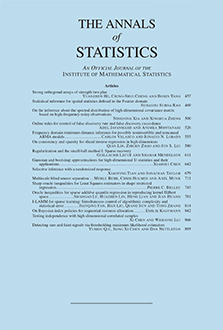Abstract
Given a two-level regular fractional factorial design of resolution IV, the method of doubling produces another design of resolution IV which doubles both the run size and the number of factors of the initial design. On the other hand, the projection of a design of resolution IV onto a subset of factors is of resolution IV or higher. Recent work in the literature of projective geometry essentially determines the structures of all regular designs of resolution IV with n≥N/4+1 in terms of doubling and projection, where N is the run size and n is the number of factors. These results imply that, for instance, all regular designs of resolution IV with 5N/16<n≤N/2 must be projections of the regular design of resolution IV with N/2 factors. We show that, for 9N/32≤n≤5N/16, all minimum aberration designs are projections of the design with 5N/16 factors which is constructed by repeatedly doubling the 25−1 design defined by I=ABCDE. To prove this result, we also derive some properties of doubling, including an identity that relates the wordlength pattern of a design to that of its double and a result that does the same for the alias patterns of two-factor interactions.
Citation
Hegang H. Chen. Ching-Shui Cheng. "Doubling and projection: A method of constructing two-level designs of resolution IV." Ann. Statist. 34 (1) 546 - 558, February 2006. https://doi.org/10.1214/009053605000000813
Information





